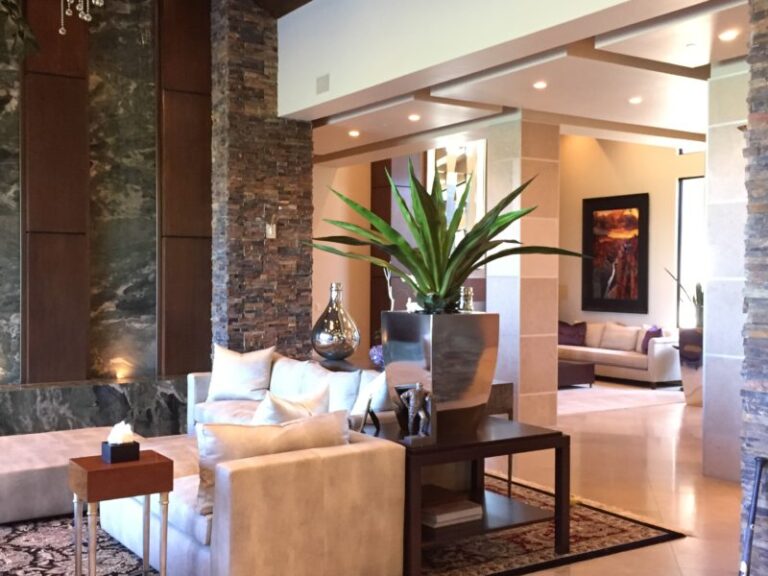
Harmony in Interior Design
The 70/30 Principle: Unlocking Effortless Harmony in Interior Design
Creating a space that seamlessly blends beauty and function requires more than just a good eye for color or stylish furniture. A room that feels naturally cohesive often follows a timeless strategy: the 70/30 rule. This approach ensures that 70% of the room maintains a consistent design theme, while the remaining 30% introduces contrast, personality, and flair. Whether you’re dreaming of a sleek modern retreat or a cozy hideaway, understanding this balance can completely transform your interiors.
Why the 70/30 Rule Elevates Your Space
Professional interior design experts champion the 70/30 rule for one reason: it works flawlessly. Here’s why this method is essential:
- Establishes visual consistency – The dominant 70% grounds the design with a unified theme.
- Injects character – The 30% contrast allows room for creativity and self-expression.
- Improves flow – Balanced spaces guide the eye effortlessly and feel intuitively arranged.
- Reduces visual clutter – Prevents overwhelming contrasts while keeping things fresh and interesting.
Now, let’s explore how to apply this golden principle to achieve stunning interior design balance.
Mastering the 70/30 Rule: Practical Tips
1. Define Your Style Split
Start by selecting a primary design style to dominate the space, complemented by a secondary style that adds variety and intrigue.
Inspiring Combinations
- Modern (70%) + Vintage (30%) – Picture clean-lined furniture accented by unique antique finds.
- Minimalist (70%) + Bohemian (30%) – Crisp, uncluttered backdrops with vibrant, textured accessories.
- Rustic (70%) + Industrial (30%) – Warm woods paired with bold metal accents.
2. Craft a Balanced Color Palette
Color choices shape the mood of your space. Applying the 70/30 ratio keeps the palette structured yet flexible.
Color Breakdown
- 70% – Dominant hues for walls, large furnishings, and floors.
- 20% – Complementary tones for secondary furniture and textiles.
- 10% – Bold accents via art, décor, or statement pieces.
Sample Schemes
- Neutral Serenity: Soft beige (70%), muted sage (20%), and gold highlights (10%).
- Dramatic Balance: Navy blue (70%), crisp white (20%), and mustard yellow pops (10%).
3. Blend Textures Thoughtfully
Texture adds depth and visual interest. Use the 70/30 principle to ensure balance without overwhelming the senses.
Effective Pairings
- Smooth + Rough: Sleek floors offset by chunky woven rugs.
- Matte + Glossy: Subtle matte walls contrasted with glossy tile accents.
- Soft + Structured: Plush seating paired with metal or wood décor elements.
Applying the Rule Room by Room
The beauty of the 70/30 rule? It works everywhere—from kitchens to bedrooms.
Kitchen
- 70%: Unified cabinets, countertops, and appliances.
- 30%: Eye-catching pendant lights, bold bar stools, or colorful backsplashes.
Bedroom
- 70%: Bed frame, wall color, and primary furniture.
- 30%: Textiles, accent décor, and vibrant art.
Bathroom
- 70%: Tiles, vanity, and fixtures in cohesive tones.
- 30%: Towels, greenery, or decorative accents.
Whether you’re working with an interior design firm or styling your space yourself, this approach simplifies decision-making while maximizing visual impact.
Avoid These Common Mistakes
Even a foolproof rule has pitfalls if misapplied:
- Overpowering contrasts – Keep your 30% accents impactful but subtle.
- Undefined dominant style – Choose your core theme before adding layers.
- Too many competing elements – Stick to a single contrasting style.
- Ignoring scale – Ensure furniture and décor are proportionate.
Designing with Purpose
By embracing the 70/30 principle, you can create spaces that feel both cohesive and captivating. This versatile strategy helps avoid design overwhelm while offering plenty of room for creativity.
If you’re ready to bring this balance to life, consider working with experienced las vegas designers or a certified interior design firm who can guide you through the process and make your vision a reality.
Maximizing online engagement is key for interior design professionals aiming to grow their client base and reputation.
FAQs: Your 70/30 Rule Questions Answered
Q1: Can I mix more than two styles?
Yes, but let one style dominate 70% and combine others within the 30% to maintain harmony.
Q2: How do I make my contrasts cohesive?
Use a unifying element—such as color, material, or theme—for all 30% accents.
Q3: Does this work for small spaces?
Absolutely! It helps avoid visual clutter and keeps compact rooms balanced.
Q4: Can I apply the 70/30 rule to furniture layouts?
Yes! Use consistent materials or colors for most furniture and introduce standout pieces strategically.
Q5: What’s the easiest starting point?
Begin with a color palette, establishing your dominant hue first.